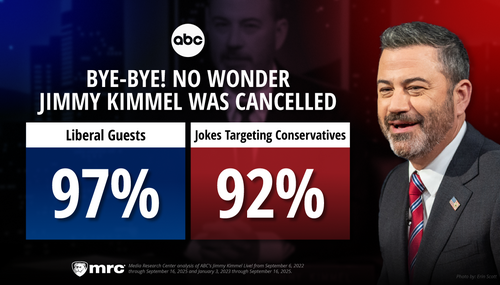These predictions fly in the face of strong economic data reported by the Labor Department on Friday – including an August unemployment rate of 4.9 percent that is now the lowest in four years. America’s press decided to play down the positives by focusing on the threat to jobs and the economy as a result of Katrina.
Edmund L. Andrews of The New York Times took a negative outlook with this:
“That would have been encouraging news to many forecasters, but it was overwhelmed by a growing expectation that Hurricane Katrina is likely to cause substantially slower growth for at least the next several months.”
Joel Havemann of the Los Angeles Times took a similar approach:
“But Hurricane Katrina will probably end the economy's 27-month streak of job gains. Katrina's effects — not only on the Gulf Coast regions where it struck but also on the national economy via higher energy prices and disrupted ports — could result in the loss of as many as 500,000 jobs in September, analysts said.”
And, in some of the poorest coverage of this issue, The Washington Post chose to largely ignore the strong labor numbers, and instead ran this heavily negative article by Nell Henderson on the cover of its Business section:
“Hurricane Katrina, by forcing an exodus of workers and families from New Orleans and surrounding areas, appears likely to rank alongside Sept. 11, 2001, and the Arab oil embargo of 1973 as one of the nation's most serious and sudden economic shocks – particularly in terms of job losses – in recent memory.”
There are several examples that indicate the gloom-and-doom scenarios won’t occur. For example, in August 1992 after Hurricane Andrew decimated Southern Florida, the media strongly suggested that this disaster would not only mean a poor employment picture in that area for many months, but also a weakened national economy.
Look at how wrong they were:
- Florida’s unemployment rate in August 1992 before Andrew hit was 8.9 percent. Twelve months later, it had plummeted to 7.2 percent as the state added 173,000 jobs.
- Nationally, 2.3 million non-farm jobs were created in the 12 months following Hurricane Andrew, dropping the unemployment rate from 7.6 percent to 6.8 percent.
- Despite all the gloomy predictions, the Gross Domestic Product grew by 4 percent in the 3rd quarter of 1992, and a vigorous 4.5 percent in that year’s 4th quarter.
Last year’s busy hurricane season gave us a better precedent to show just how wrong our media are about the economic impact of natural disasters. For instance, the Dallas Morning News had this to say on October 3, 2004:
“The stakes are high and not just for Florida. A decline in the nation's fourth-largest economy would ripple across the national economy, economists and other experts said. Consumers probably will pay more for gas, construction materials and orange juice, among other things.”
The Florida economy exploded in the 12 months since that horrible hurricane season and so has the national economy. The unemployment rate in Florida as of July 2004 before the hurricanes was 4.7 percent. The most recent figures for July 2005 put this rate at 3.8 percent, with a staggering increase of 325,000 new jobs. Nationally, unemployment has declined from 5.5 percent in July 2004 to 4.9 percent in August 2005. That’s an increase of 2.4 million non-farm jobs. So much for the Florida hurricanes destroying both that state’s and the nation’s economies.
Despite this precedent, a Los Angeles Times article by Bill Sanger predicted that this time will be different:
“But unlike Florida, which is undergoing a speedy recovery from an onslaught of hurricanes last year, the two southern neighbors could find their revival much slower and tougher.”
Sanger’s contention was that Florida rebounded so quickly as a result of it being a battleground state in the presidential election, as well as due to its relative wealth. By contrast, the article claimed, the low per capita incomes of Louisiana and Mississippi, along with the devastation to their primary industries of energy, shipping, and tourism, will make these states much slower to recover.
Yet, Sanger ignored two pivotal issues. First, the Gulf region is responsible for up to 25 percent of America’s domestic energy production. This is why oil, gasoline, and natural gas prices exploded after Katrina hit. American energy companies have a huge vested interest in repairing the area as quickly as possible. Current energy prices give the industry incentive to spend almost unlimited amounts of time and capital on those repairs.
The ports on the Gulf – in particular, those with access to the Mississippi – also represent the largest conduit of commerce for America’s agriculture industry. Without that, farms throughout the Midwest will have few options to transport their crops. So, the agriculture and shipping industries also have an enormous vested interest in this region’s reconstruction.
It is too soon to know how quickly this region is going to rebound from this enormous natural disaster. If history is a guide, then it’s a bad idea to bet against a speedy recovery.




